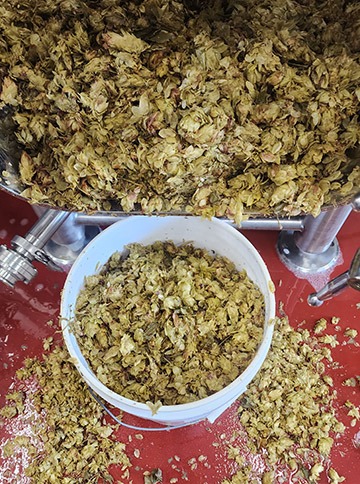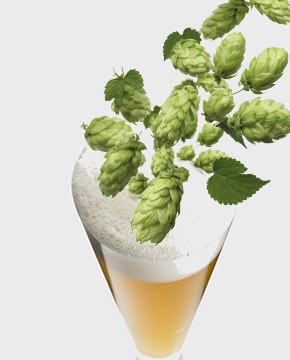Crystal Malts: Tips from the Pros
Crystal malts run the gamut in color and flavors they contribute to a brew. Beyond these positive characteristics, crystal malts enhance a beer’s body and help with foam stability. They do come with risks for the inexperienced, however, such as impacting pH, fermentability, and contributing harsh flavors if added with a heavy hand. Small additions are key, as these pros explain.

Brian Pawola is the Head Brewer, Distiller, and Co-Founder of Pollyanna Brewing & Distilling in Lemont, Illinois
I look for lighter colored crystal malts to provide a depth of flavor and aroma, enhance a beer’s body, and add to foam stability. We use a variety of lighter colored crystal malts in paler beers so that we can obtain the desired effect without changing the color too much. Some of my favorite lighter crystal malts are the Best Malz Caramel Pils and Caramel Hell. We’ve used these in all sorts of beers from pale German lagers all the way to heavy imperial stouts. Darker colored crystal malts have the same benefits (flavor, aroma, body, foam stability), but in a more enhanced way. They add more candy-like flavors and aromas as well as dark fruits. Some of the darkest crystal malts can have some burnt sugar, raisin, prune, or even a slightly roasted character. Amber, brown, and caramel Munich are some of my favorite mid-range dark crystal malts that provide distinct flavors when used at about 5%. CaraAroma® is probably my favorite of the darkest crystal malts. I really enjoy the toasted nuttiness, dark fruit, and deep caramel and toffee flavor it provides.
Layering crystal malts is a great idea as it provides a depth of flavor, but layering in a lighter colored crystal malt or two can also keep your water’s pH at a level easier to control. Too much crystal malt, however, will negatively impact the mash pH and bring it out of the ideal range. The beer can become too acidic and astringent and add an unpleasant harshness. We don’t go over 10% crystal malt usage and even then when we’re going that high, we’ll layer the dark and light crystal malts together to help maintain a proper mash pH. The water profile greatly impacts the mash pH as well, but that’s for another article!
In addition to pH impact, adding anything more than 10% crystal malt tends to get too sticky and sweet for my liking. I’d rather add depth with base malts such as Maris Otter, Vienna, or Munich versus going too heavy on crystal malts.
Certain crystal malts can have an impact on wort fermentability, but it tends to be minimal. The difference between fermenting a beer with 100% base malt compared to 90% base malt and 10% crystal malt is pretty small, but it depends on the diastatic power of the base malt as well. In general, you’ll probably see the final gravity a touch higher when using crystal malts and keeping all other variables the same, but the reduction in attenuation is minimal when using smaller amounts.
In addition to the styles that require it, we’ve experimented with lighter crystal malts in traditional styles like a helles, Pilsner, and hefeweizen and had a lot of success, but don’t go overboard! Something like a 5% Caramel Pils addition in a helles adds a delicious layer of complexity without taking away from the traditional aspects of the beer. Sometimes we’ll also experiment with layering or substituting a similar colored crystal that provides a different flavor and aroma than what is traditionally used in a particular style. There are so many new, experimental crystal malts, so why not try them all? And that would be my biggest take-home message for homebrewers is to experiment with all the new crystal malts that are out there; and to layer light and dark crystal malts in some of your favorite darker beers. Don’t be afraid to use a small percentage of a lighter crystal malt in a more pale beer as well!

Casey Motes is Co-Founder and Head Brewer of Eureka Heights Brew Co. in Houston, Texas
With lighter crystal malts I get a lot of caramel flavor and in the darker varieties the flavors change to toffee and then some really great plum and dark fruit characteristics. Aside from the flavors, added mouthfeel and body are big reasons why we use crystal malt in a recipe. Crystal 120 is definitely the most common crystal that we use at Eureka Heights because the dark fruit flavors work really well with our house English yeast. Another reason is the bang for your buck — we don’t need to use as much of the malt to get a big impact.
Layering a couple of crystal malts of different colors is a great way to provide a depth of flavor you can’t get from a single roast level. The first test batches of our ESB only used a single crystal malt and the flavor just felt flat. Splitting the crystal to ⅔ 45 °L and ⅓ 120 °L made a huge difference in the final product. That said, we’ve found that using more than two types of crystal in a recipe didn’t really add more depth than just using two.
When building a recipe, 10% crystal malt is pretty much a hard stopping point for us, but we have the best luck between 4-7% depending on the beer style. Crystal malts do lower the pH of your mash, which homebrewers should keep in mind. We start with reverse osmosis water and adjust our salt profile for beers with heavy crystal or roasted malt to take that into account.
You also need to consider wort fermentability when using more crystal malts. We’ve tried mashing some of the beers with crystal at a lower temperature, but we’ve found that most styles that use crystal tend to work better with a little extra residual sweetness. Also, our house yeast has a pretty high attenuation, so yeast selection definitely plays an important role there.
In addition to the traditional styles, we’re big fans of adding multiple crystal malts to stouts and porters. The sweetness and added mouthfeel from the crystal can help balance out any dryness from the roasted and chocolate malts.
My last bit of advice is the next time you are at the homebrew shop, taste a few of the different crystal malts. It’s amazing to taste the difference between the different levels.

Logan Ackerley is the Head Brewer at Wallenpaupack Brewing Co. in Hawley, Pennsylvania
I generally use lighter crystal malts to balance the flavor of lower alcohol, hoppy beers. Our Party Cove Session IPA and Smallmouth Low-Cal IPA rely on C-30 and C-10, respectively, to provide a bit of complexity and malt sweetness. With the lower level of alcohol and the dryness of these beers, there has to be something in the grist to balance out the hop load.
There is such a wide range of flavors and sweetness in crystal malt. Mixing them allows you to make a much more complex beer. Our darker barrel-aged beers have really benefited from this method. We can add flavors ranging from sweet malt and toffee to burnt sugar and stone fruit. Layering these flavors can really add a unique drinking experience for darker and higher alcohol beers as they warm.
My favorite crystal malt is Thomas Fawcett Crystal Rye. The color is in the mid-range and it adds a unique spiced toffee flavor. A lot of my darker beers get 3–5% in the grist. Even small amounts of crystal malt can make a significant impact on a variety of styles. A good example would be our English Pale Mild. We won a silver medal at Great American Beer Festival in 2020 for that beer but I brewed the beer again in 2021 and dropped the crystal rye in the recipe by just 1%, and it totally changed the beer. I wouldn’t say crystal rye is traditional for English mild, but without it the beer just fell flat.
We probably don’t go much over 15% with crystal malts in any recipe, but depending on what you’re brewing, which crystal malts you plan to use, hopping rates, attenuation rates, etc., you may be able to use more.
One more thing that I would recommend paying attention to is the crush on your crystal malts if you’re brewing all-grain and with a higher percentage of them. We had some really annoying lautering issues early on when we would brew anything in the amber to brown color range. We found that our mill was crushing the crystal malts a little too fine, causing slow runoffs and making for some really long brew days.






